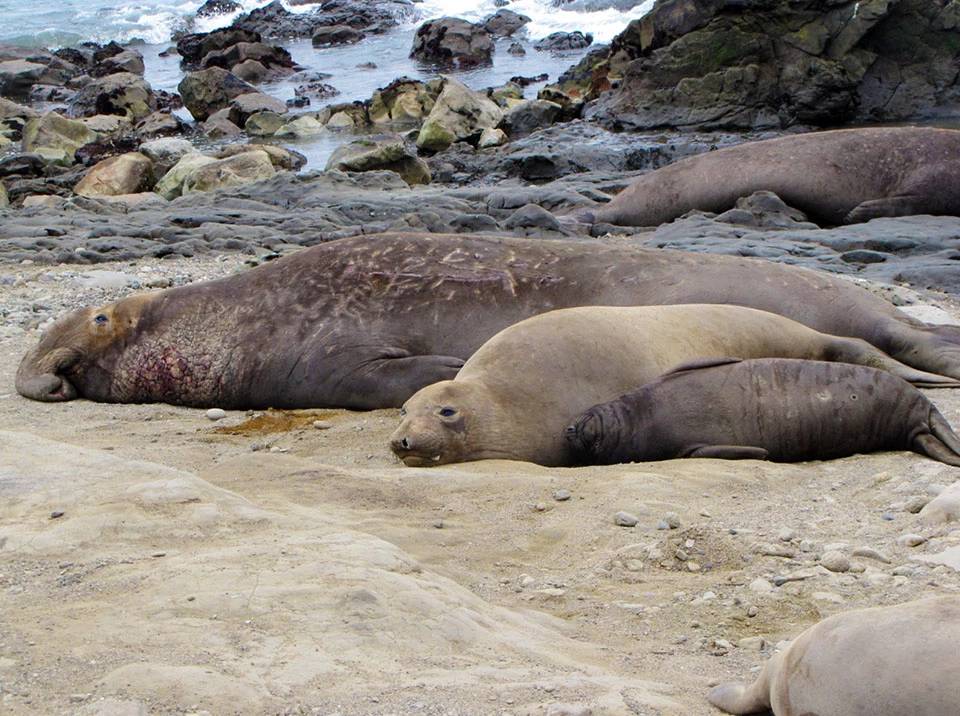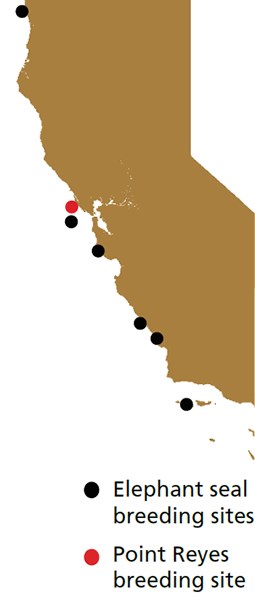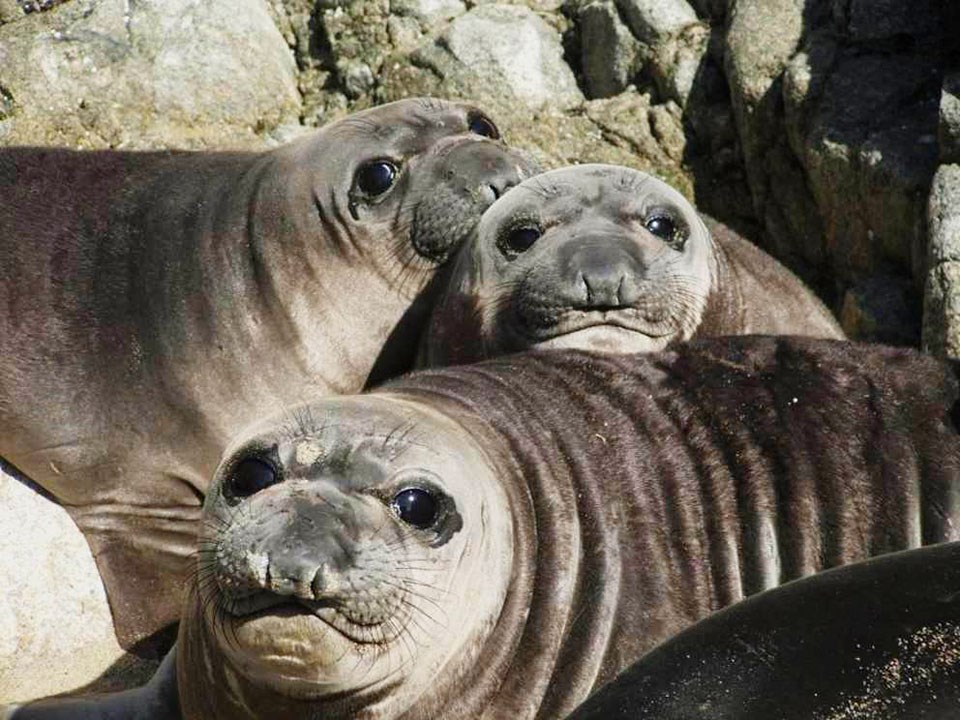Last updated: December 15, 2018
Article
Elephant Seal Monitoring at Point Reyes National Seashore

© A. Frostholm

Why Are Elephant Seals Important?
As top ocean predators, and prey for even larger predators like orca whales, elephant seals are a key component of the marine ecosystem. Changes in their populations often reflect changes in marine conditions, so monitoring them gives us important insights into the state of our oceans. Elephant seals can also be readily counted when they come ashore each year to give birth, breed, and molt. Point Reyes National Seashore is one of only about a dozen sites where northern elephant seals breed worldwide.
Why Do We Monitor Elephant Seals?
- To detect trends in population size and reproduction
- To determine trends in elephant seal distribution on Point Reyes beaches
- To identify potential threats to the elephant seal population
- To share and compare data with other elephant seal researchers
How Do We Use the Monitoring Data?
- To ensure northern elephant seal and visitor safety through appropriate signage, staffing, visitor outreach, and beach closures
- To document northern elephant seal colony expansion and interactions with other species.
- To predict and prepare for the effects of climate change, such as sea level rise, on Point Reyes beaches and wildlife

NPS / Heather Jensen
What Have We Learned?
Once widely distributed along the California and Baja California coasts, northern
elephant seals were hunted to the brink of extinction in the mid-1800s for their
oil-rich blubber. As few as 100 seals may have remained before hunting was
banned by the Mexican and United States governments in the early 20th century.
The population has since been recovering and recolonizing historic territories with
added support from the U.S. Marine Mammal Protection Act of 1972.
At Point Reyes, northern elephant seal colonies were absent for more than
150 years until a colony formed in the winter of 1981. The new colony grew
exponentially until 1997-98. Growth continues, though at a much slower pace,
and elephant seals have continued to expand into new sub-colonies within Point
Reyes.
For More Information
Marine Ecologist
Sarah Codde
Links
Pacific Coast Science & Learning Center
San Francisco Bay Area Inventory & Monitoring Network
Summary by Jessica Weinberg McClosky, April 2013.
Download PDF from the Data Store
